This month’s author interview is with Tara Lazar (rhymes with “bazaar”), a mother of two who is “pushing a stroller along the path to publication.” You probably know her thanks to her terrific website/blog as well as her quirky, funny picture books, such as these.
Before we launch into the official OPB interview, let’s get to know Tara a bit via a quick Truth or Lie game. Which of these feels as honest as a cue ball? Which seem as bogus as a four-dollar bill?
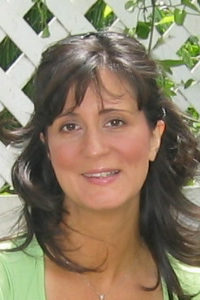
- Tara chooses cheese over chocolate every single time.
- Tara walks with a blue cane.
- Tara once lived in a house that was pink, pink, pink.
- Tara’s a former figure skating champion.
- Tara’s hamster, Ozzie, is the world’s cutest.
- Tara can’t stand coffee.
- If Tara were stranded on a deserted island and could only have one type of food every single day, it’d be tacos.
Answer Key: All are true! (Yep. Even the thing about coffee.)
So now that you’re starting to get a sense of what Tara’s all about, read on and learn more about the amazing Tara Lazar who sometimes wishes her name were “Tara Laserbeam.” (Spoiler: She’s s total hoot!)
Website: www.TaraLazar.com
Blog: www.TaraLazar.com
Twitter: @taralazar
Facebook: www.facebook.com/authortara
Pinterest: www.pinterest.com/taralazar/
RVC: So what type of kid were you? And how did that childhood prepare you for a career as a picture book author?
TL: Teacher’s pet. Super sharp, but also crazy-weird. Creative. Writing, acting, drawing, or making something all the time.
I think the acting prepared me to write with a strong voice. I become the character. Being weird as a kid means you are cool as an adult. I never grew up past 8, probably because my parents separated shortly after then and my innocence was shattered. I try to remain that 8 year old as much as possible. In fact, most of my strong memories come from that time period.
RVC: How big of part did books and reading play into those early childhood years?
TL: A big part. I remember my elementary school library telling me that Ally Sheedy wrote and published She Was Nice to Mice at just 12 years old. I was 8 at the time and although 12 seemed like a lifetime away, it was also close enough to become a goal, to become an author myself. It only took me 30 more years!
RVC: I’m always interested in how someone’s first picture book happened. What’s the story of YOUR first picture book?
TL: I have told this story before, so I am going to boil it down to its most essential elements–I wrote new stories constantly. I brainstormed new ideas several times a week. I stopped submitting and concentrated on my craft. I attended conferences and learned. I made writing friends. After almost two years of this, I wrote The Monstore, my breakthrough manuscript which my critique partners assured me would sell. The Monstore helped me land my agent, Ammi-Joan Paquette, and my first contract for that book followed shortly thereafter.
RVC: How vital is it for aspiring picture book writers to find an agent first?
TL: I think now more than ever it is advantageous to have an agent. More houses are closing their doors to unsolicited submissions simply because they receive too many manuscripts to sort through efficiently and find the treasures. An agent opens doors for you and also helps to guide your career.
It is not impossible to be published without one–my friend Josh Funk was discovered in the slush pile–but I think you will get a bigger advance and a bigger publisher (with greater distribution and marketing power) with an agent.
RVC: What does your writing process look like?
TL: First comes the concept, which I write down. Then there’s a lot of thinking. It marinates in my mind subconsciously until I know I’m ready to give the first draft a shot. It’s a gut feeling I cannot explain. Typically it’s weeks or months after the initial idea, but if the idea gets me super excited, then it’s sooner. 7 Ate 9 happened right away, idea then manuscript. BOOM, BOOM.
Because of this marination, when I finally get butt in chair, the first draft emerges in somewhat decent shape, and quickly–anywhere from a day to a week.
I spend far more time thinking about a story than I do actually writing it.
Then the story goes to my critique group for a round or two. I don’t do more than two revisions for my group because we all lose that “fresh look” ability, and I believe there is “over-revising.” Then I give it to my agent who often gives me editorial notes and I revise until she is happy with the story (again, no more than two rounds) and ready to submit.
RVC: There’s no way around it–you’re a prolific writer. Beyond the two-revisions-and-onward strategy, do you have any tips for those who struggle to get projects done?
TL: I think all writers have an undeniable need to write. But it’s important not to compare your output to another writer. We all have our own pace and we need to respect that. My best advice is to learn your process.
What works best for you? Routine? No routine? Experiment and find out.
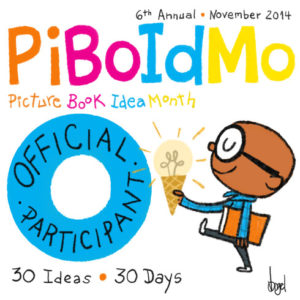 RVC: So let’s talk about PiBoIdMo (Picture Book Idea Month), which you created in November 2009. Why did you create it?
RVC: So let’s talk about PiBoIdMo (Picture Book Idea Month), which you created in November 2009. Why did you create it?
TL: PiBoIdMo was patterned after NaNoWriMo, hence the awful name. I began it because I believe picture books are all about great concepts. And to have a winning concept, you need a lot of concepts from which to choose. For every twenty to thirty story ideas, maybe one is worth pursuing. If you spend every day recording at least one idea, you will have a trove of potential stories by the end of the year and never be without one to write.
RVC: And PiBoIdMo became Storystorm in 2017 because…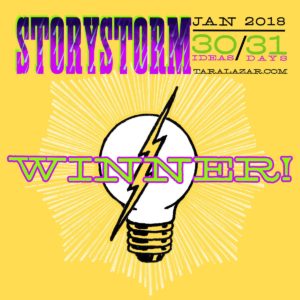
TL: Again, the name was the worst. I would have created a better name had I thought about it for more than two seconds. No one could pronounce PiBoIdMo and the name didn’t conjure up and idea of what the event was. So I chose Storystorm to suggest a story brainstorm, and I moved it to January so it comes after the holidays instead of during them.
New year, new ideas, a fresh start.
RVC: In addition to being a successful picture book author, you’re a frequent speaker on MS. How do those two careers align?
TL: Get around, over, and through obstacles any way you can. Don’t let them stop you. This message is applicable to writers as well as those who suffer from chronic illness.
RVC: You’ve got a couple of new books coming out soon. Which has the most unusual path from initial idea to publication?
TL: Your First Day of Circus School. The manuscript had so many art notes that it was difficult to read through and understand. So my agent suggested putting it in grid format, which I blogged about here.
https://taralazar.com/
RVC: How many number puns did you have to throw out to make 7 Ate 9 work? And is that more or less than you have to toss during the revision process of your other picture books?
TL: I didn’t throw any out. The important thing when writing with puns is to ensure the story still makes sense with them. The mystery of the story and the solution can be understood by all ages. With the exception of the title, no major plot point relies on a pun.
With all my books, I am more likely to be adding during revision than cutting.
RVC: Okay, it’s time for the Lightning Round! Zippy quick answers, please. Ready? Who’d you rather have as a week-long houseguest–Sauron or Voldemort?
TL: Voldemort, because he’s English and if I serve Twinings Earl Grey, he’ll most likely act civilized.
RVC: Top three cheeses in order of yumminess?
TL: Manchego, goat cheese, and burrata.
RVC: Norman’s (from your book Normal Norman) middle name?
TL: Frank.
RVC: Name an up-and-coming picture book author whose work is always on your MUST-READ list.
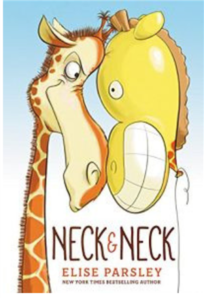 TL: Oh, there are so many! This field is bursting with talent! But since I just bought Neck & Neck, I’ll say Elise Parsley.
TL: Oh, there are so many! This field is bursting with talent! But since I just bought Neck & Neck, I’ll say Elise Parsley.
RVC: Your #1 goal as a picture book writer.
TL: To keep being a picture book writer!
RVC: Favorite thing a child has ever said about one of your books?
TL: It happened just last week–a girl said, “you are the author of FAMOUS books.” She complimented my lemur sweater, too, for bonus points.
RVC: Thanks so much, Tara!


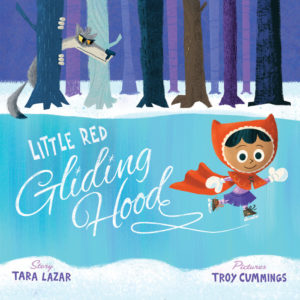
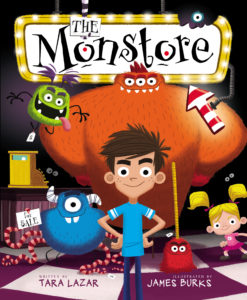
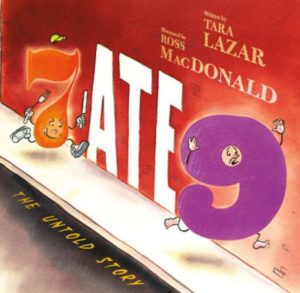
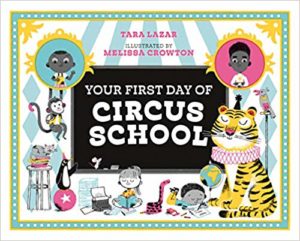
Love, love, love Tara’s infectious energy. She continues to be a constant inspiration for me.
Ah, Tara is awesome—in spite of the fact that she doesn’t like coffee.
And, for the record, I always loved the name PiBoIdMo. It was a perfectly silly name for an event where writers were encouraged to let their silliest ideas take form.